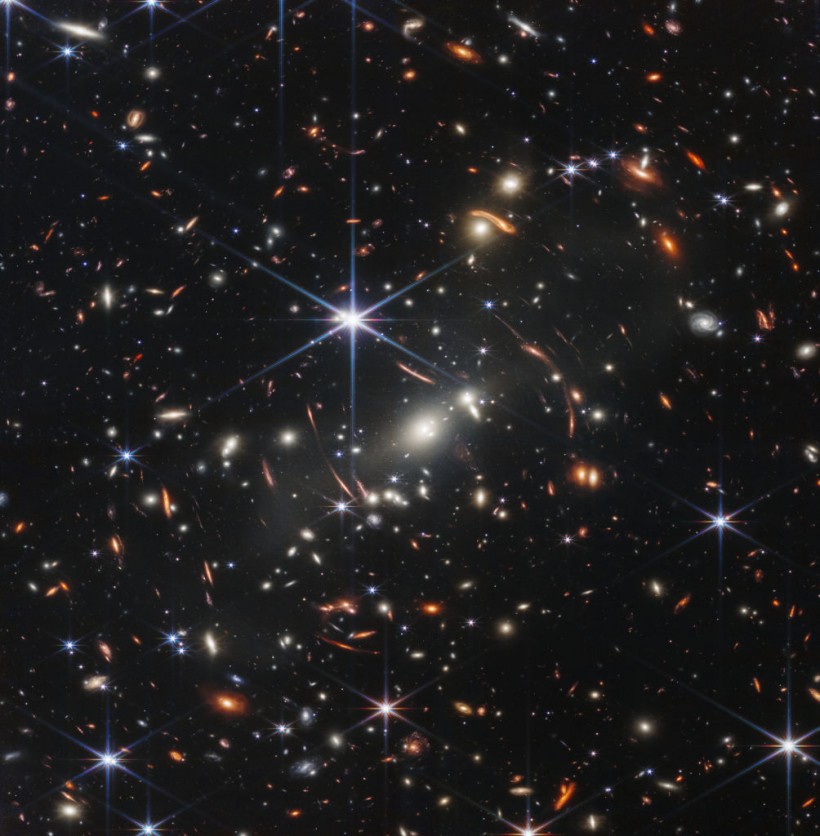The very first full-color image captured by the newly-minted James Webb Space Telescope was historic in every inch and pixel. Now, it could prove to be a significant photo in astronomy as scientists claimed that they may have discovered one of the earliest stars in the universe thanks to this image.
The discovery is an indication of both the new knowledge that James Webb still has to share and the wealth of information that can be found in every image that is already public.
President Joe Biden unveiled the first full-color James Webb image on July 11 that looks billions of years into the past and displays a massive network of galaxies. According to a BBC report, astronomers believe they have located the most distant globular clusters ever found within that network.

WASHINGTON, DC - JULY 11: In this handout photo provided by NASA, the first image from NASA’s James Webb Space Telescope to be previewed by U.S. President Joe Biden, during a briefing with National Aeronautics and Space Administration (NASA) leaders in the Eisenhower Executive Office Building's South Court Auditorium on July 11, 2022 in Washington, DC.
Read also: Hackers Are Using NASA's James Webb Space Telescope Image to Spread Malware
Sparkler Galaxy
Dense star collections known as globular clusters have unclear origins. There are about 100 of these compact clusters in the Milky Way, and they are known to have fewer of the heavy chemical components linked to younger stars like the Sun.
The most recent James Webb image, SMACS 0723, now displays a far-off globular cluster that has been enlarged by gravitational lensing. The cluster was discovered by astronomers from the University of Toronto, who named it "the Sparkler Galaxy" because of the little yellow-red spots surrounding it.
The Sparkler Galaxy also appears three times in the SMACS 0723 image due to odd distortion effects caused by gravitational lensing. Gravitational lenses have been shown to produce "mirror" images of far-off galaxies and magnify and distort distant objects.
Initially, the University of Toronto researchers speculated that the "sparks" might represent distinct objects located far from or in front of the Sparkler Galaxy. However, the identical dots visible in all three iterations of the Sparkler Galaxy strongly suggest that they are related.
The astronomers believe the sparkles are globular clusters like the ones seen around the Milky Way.
According to the researchers, the sparkles are globular clusters similar to those that can be observed in the Milky Way. But more importantly, the team claims that the clusters are incredibly ancient and were formed earlier in the history of the Universe.
The galaxy cluster is redder than predicted, which indicates that it is older than they would have assumed, given how early it is in the Universe relative to other objects, according to the University of Toronto study.
The team claimed that the image of the Sparkler Galaxy appears to be from nine billion years ago, or around 4.5 billion years after the Big Bang.
This opens a possibility that the globular sparkles may have originated just a few hundred million years after the Big Bang and could hold the earliest stars in the Universe.
Related Article: NASA's James Webb Space Telescope Sets Historic Milestone With First-Ever Image of an Exoplanet
This article is owned by Tech Times
Written by Joaquin Victor Tacla








